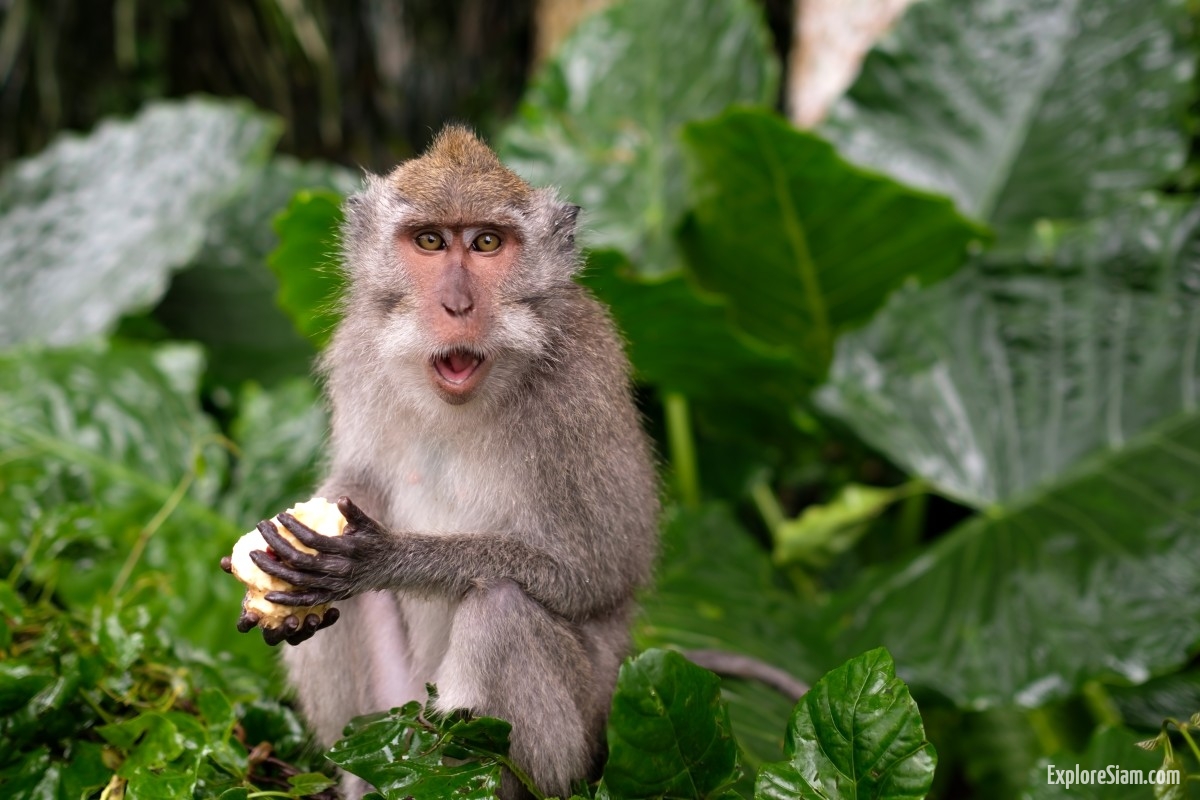Thailand is renowned for its lush landscapes, rich culture, and diverse wildlife. Among the country’s most captivating inhabitants are its monkeys. These primates can be found throughout Thailand, from bustling cities to serene temples and remote islands. While they are a source of fascination and joy for many visitors, it’s essential to approach them with knowledge and caution. Understanding the various species, their behaviors, and the necessary safety measures can ensure a harmonious and safe interaction with these remarkable creatures.
The Diversity of Monkeys in Thailand
Thailand is home to several species of monkeys, each with unique characteristics and habitats. The most commonly encountered species are the long-tailed macaques, also known as crab-eating macaques. These adaptable primates thrive in both urban and rural settings, often seen in temple complexes, markets, and coastal areas. Their curious and opportunistic nature makes them frequent visitors to areas with human activity.
Another notable species is the pig-tailed macaque. Found in the forests of southern Thailand, these monkeys are slightly larger and more robust than their long-tailed counterparts. While they are less accustomed to human presence, encounters with them can occur in national parks and less populated areas.
The dusky langur, or spectacled leaf monkey, is a more elusive species. With their distinctive white eye patches and dark fur, they inhabit the forested regions of southern Thailand and the Malay Peninsula. These monkeys are generally shy and avoid human contact, making sightings a rare and special experience.
Gibbons, although not true monkeys but rather lesser apes, also inhabit Thailand’s forests. Known for their acrobatic brachiation through the treetops and haunting calls, gibbons are primarily found in the northern and western parts of the country. They are highly territorial and form strong family bonds, adding to their appeal for wildlife enthusiasts.
Behavioral Insights
Monkeys in Thailand exhibit a range of behaviors that are fascinating yet demand respectful observation. Long-tailed macaques are highly social and live in troops led by dominant males. Their interactions can be complex, involving grooming, play, and occasional conflicts. They are intelligent and have learned to associate humans with food, often begging or attempting to steal snacks from unsuspecting tourists.
Pig-tailed macaques, while less bold, can also display aggressive behaviors, particularly when they feel threatened or cornered. They are more inclined to retreat into the forest, but their strength and teeth make them formidable when provoked.
Dusky langurs, in contrast, are gentle and arboreal, rarely descending to the ground. Their diet consists mainly of leaves, fruits, and flowers, and they are known for their serene and non-aggressive nature. Gibbons, with their agile movements and vocalizations, are more arboreal and elusive, usually avoiding areas with high human activity.
Safety Measures for Visitors
Interacting with monkeys in Thailand requires a balance of curiosity and caution. While these animals are an integral part of the country’s charm, they are wild and unpredictable. Understanding and following safety measures is crucial for both human and monkey well-being.
First and foremost, it’s important to respect the monkeys’ space. Approaching them too closely or attempting to touch them can provoke defensive behaviors. Monkeys have strong territorial instincts and may perceive close proximity as a threat. Observing from a distance allows for a safer and more enjoyable experience.
Feeding monkeys, while tempting, is strongly discouraged. Human food can harm their health, and feeding them can reinforce aggressive behaviors. Monkeys that become accustomed to being fed by humans may lose their natural foraging skills and become dependent on handouts, leading to conflicts and potential harm to both parties.
Visitors should also be mindful of their belongings. Monkeys are notorious for their curiosity and dexterity, often snatching bags, cameras, and other personal items. Keeping a firm grip on belongings and avoiding flashy displays of food or valuables can prevent such incidents.
In areas where monkeys are known to be aggressive, such as certain temples or urban locations, it is wise to follow local guidelines and advice. Some sites may have designated feeding areas or specific times when monkeys are less active. Following these guidelines helps maintain harmony between humans and monkeys and reduces the risk of negative encounters.
Ecological and Cultural Significance
Monkeys hold significant ecological and cultural roles in Thailand. Ecologically, they contribute to forest health by dispersing seeds through their diet. Their activities help maintain the biodiversity and balance of forest ecosystems, supporting a variety of plant and animal species.
Culturally, monkeys are often revered and respected in Thailand. Many temples and religious sites are home to monkey populations, where they are seen as sacred animals. The most famous example is the Monkey Temple in Lopburi, where hundreds of macaques live in and around the temple grounds. This coexistence between humans and monkeys is rooted in Buddhist beliefs and practices, emphasizing compassion and coexistence with all living beings.
Conservation Efforts
Conservation of monkey populations in Thailand is an ongoing challenge. Habitat loss due to deforestation and urbanization poses significant threats to their survival. Additionally, the illegal pet trade and human-wildlife conflicts further endanger these primates.
Efforts to protect and conserve monkey populations include establishing protected areas, such as national parks and wildlife sanctuaries, where they can thrive in their natural habitats. Public education and awareness campaigns are also crucial in promoting respectful and safe interactions between humans and monkeys. Organizations and local communities are working together to mitigate conflicts and ensure the well-being of these animals.
Monkeys in Thailand are a captivating and integral part of the country’s natural and cultural heritage. While their presence adds to the allure of exploring Thailand, it is essential to approach them with respect and caution. Understanding their behaviors, following safety measures, and supporting conservation efforts can help ensure that both humans and monkeys coexist harmoniously. By appreciating these remarkable creatures from a safe distance, visitors can contribute to their preservation and enjoy a more enriching experience in the beautiful landscapes of Thailand.





